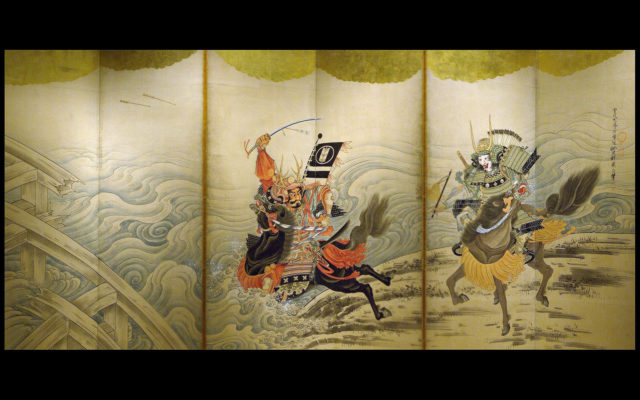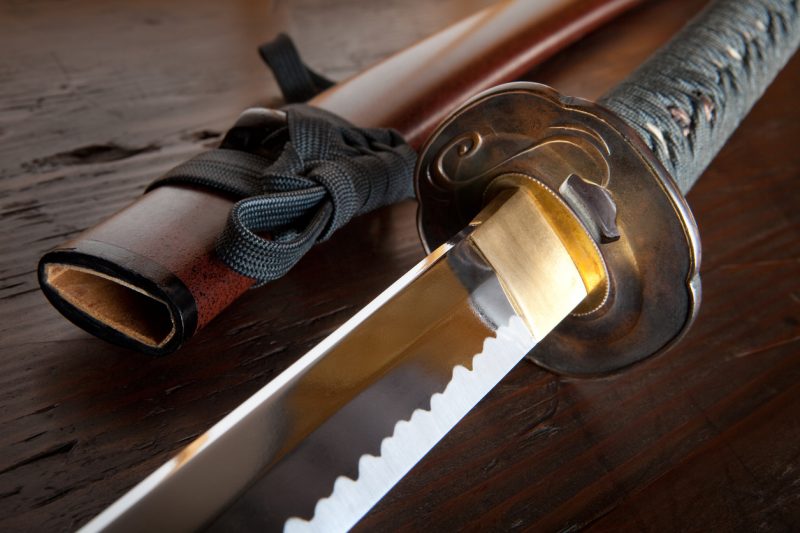Through centuries of warfare and intrigue, the great samurai clans grappled for control of Japan. Here are some of the most important of those noble families.
The Hojo Clans
No name casts as great a shadow across medieval Japan as that of Hojo. Confusingly, it is the name of two separate and powerful clans who rose to dominance in different periods.
The Hojo of Kamakura reached the high point of their power in the 13th century. The head of the clan became regent for the shogun or warlord, who ruled Japan on behalf of the emperor. For over a hundred years, the Hojo regents were the men behind the throne, rulers in all but name. Then in the 1330s they were overthrown as the emperor himself briefly gained control of the country.
The Hojo of Odawara were a powerful force in eastern Japan during the wars of the 16th century. The last clan to hold out against the dominance of Toyotomi Hideyoshi, they clung to their independence even as they withdrew to their great fortress of Odawara. It fell after an extended siege at the start of the 1590s signaling the end of a period of independence by the warrior clans.
Minamoto
The Minamoto were a clan from eastern Japan, regarded as backward and uncultured by their rivals. Like their main opponents, the Taira, they were descendants of the imperial family. During the 12th century, they and the Taira fought for control of Japan.
Two members of the Minamoto clan played an especially important part in history. Minamoto Yoshitsune, their greatest general, led them to victory against the Taira and is one of the most famous samurais in history. His elder brother Yoritomo created the post of the shogun, the military dictators who ruled on behalf of the emperor for centuries aftward.
Taira
The Minamoto’s principle opponents, the Taira’s power ended in 1185 with their defeat in the sea battle of Dan-no-Ura. It led to their warriors committing one of the largest mass suicides in samurai history. Due to their dramatic downfall, legends of ghosts and seas of blood haunted the site of the battle for generations.
Ashikaga
One of the several families to hold the shogunate, the Ashikaga came to prominence in the 1330s. Ashikagawa Takauji helped the Emperor Go-Daigo to regain control of the country from the Hojo. Disappointed with the rewards he received, Takauji schemed and then made war to take control from the emperor, installing himself as shogun. His family was eventually brought down by the same combination of machinations and warfare that had raised them up.
Ouchi
Descended from a Korean prince who arrived in Japan in 611, the Ouchi played a part in the country’s politics for 900 years. They reached their peak in the early 1500s when their leader Yoshioki restored a deposed shogun. His son Yoshitaka was more interested in the arts than in war. When one of his retainers rebelled against him, few warriors rallied to his side. He and his son both committed suicide, ending their line.
Mori
The Mori were vassals of the Ouchi. They avenged their masters’ defeat in a surprise attack against the traitor Sue Harukata. They then went on to become a leading clan in their own right.

Imagawa
One of four clans vying for control of eastern Japan in the mid-1500s, the Imagawa used marriage, war, and scheming to try to dominate their opponents. Like the others, they were eventually eclipsed by the rise of Oda Nobunaga, one of Japan’s most famous leaders.
Takeda
Rivals of the Imagawa, the Takeda saw their greatest success under Takeda Shingen. An effective ruler, he extended his clan’s territory at the expense of his neighbors. Unlike many other lords, he succeeded in balancing the need to supply trained warriors with the need to keep enough workers in the rice fields to feed the population.
Asakura
One of the more northerly of the clans vying for power in the 16th century, the Asakura saw their greatest victories and defeats in the 1560s and 1570s.
Asakura Yoshikage, as leader of the clan, achieved a significant victory in 1562. By beating the Ikko-Ikki, a religious warrior cult, he contained their expansion. He then married his daughter to the head of the group, tying himself to one of the wild cards of that period’s wars.
Next, he ran up against Oda Nobunaga, a rising power on his way to dominating Japan. Nobunaga defeated the Asakura at the Battle of Anegawa in 1570. The conflict between them continued, as the Asakura made alliances with Nobunaga’s other enemies. In 1573, Yoshikage led a force to assist one of those allies but was intercepted and defeated by Nobunaga. Yoshikage committed suicide, marking the end of his clan’s resistance to Nobunaga.
Asai
The Asakura’s most loyal allies against Nobunaga, the Asai shared in their defeats. They too played a leading part in the defeat at Anegawa, losing many men. It was their castle that Yoshikage was marching to relieve when he was defeated in 1573.
Following the loss, the Asai were easily defeated, and their leader committed suicide. His head and Yoshikage’s were displayed in Kyoto then preserved by being lacquered and gilded, a grisly souvenir of the destruction of two noble warriors.
The clan’s lands were given to one of Nobunaga’s generals.
Tokugawa
By allying themselves with Nobunaga, the Tokugawa rode to prominence with him. After the death of Nobunaga and the man who followed him, Tokugawa Ieyasu emerged into the power vacuum. He defeated his opponents, took control of Japan, and set himself up as shogun. The Tokugawas retained the role for the next two and a half centuries.
The Tokugawas oversaw a period of unprecedented peace and unity. They divided and dominated the great clans, keeping their families in Edo as hostages to ensure their good behavior.
Many clans had risen and fallen over the centuries. The Tokugawa were one of the few to make their power last.
Source:
Stephen Turnbull (1987), Samurai Warriors
